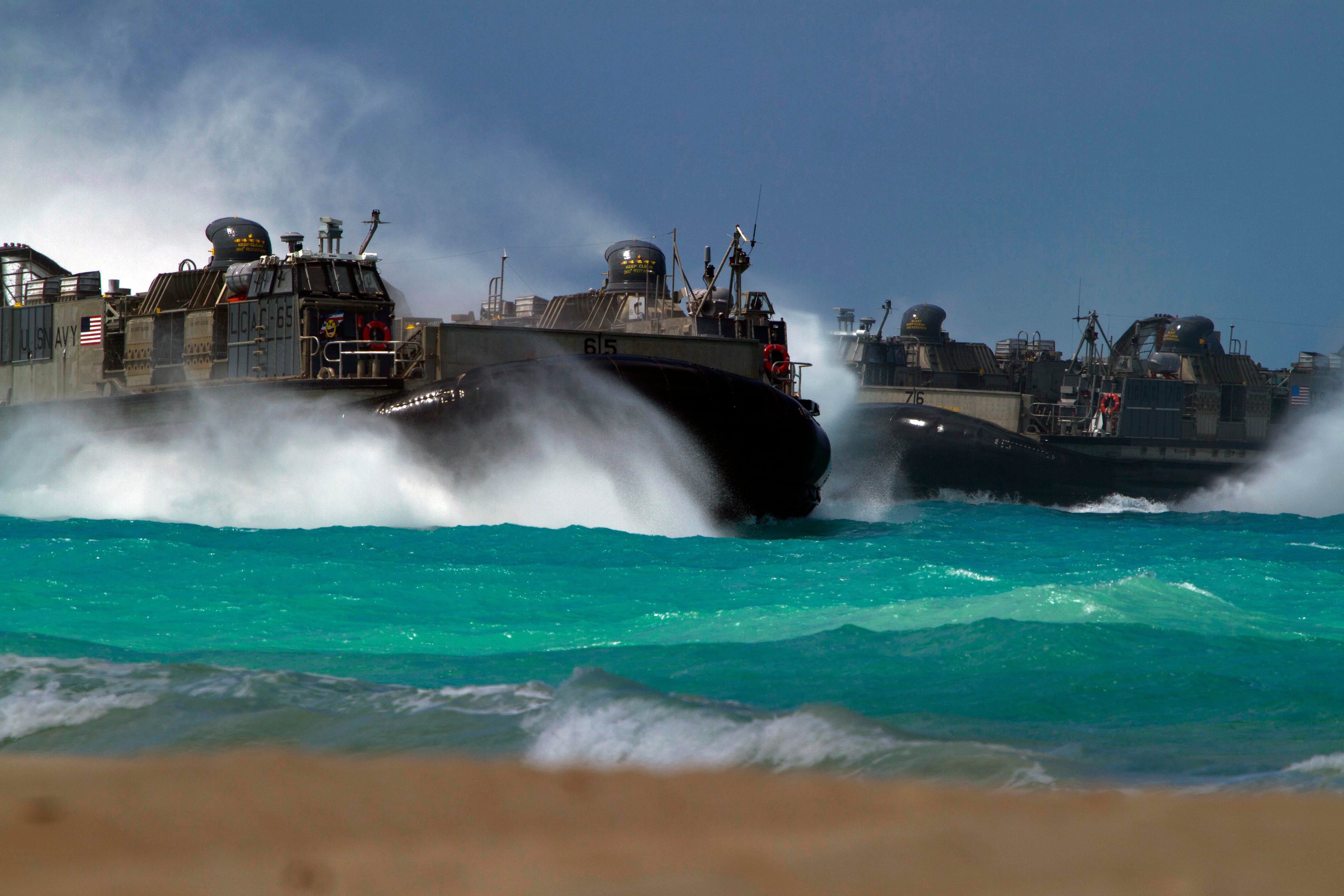After focusing on killing terrorists for 15 years, the Marine Corps is making up for lost time by exploring new technologies to penetrate enemy air and coastal defenses.
"Obviously, having a revanchist Russia and a surging China concentrates the mind," said Col. Dan Sullivan, chief of staff for the Marine Corps Warfighting Laboratory.
This April, the Navy and Marine Corps will hold an exercise at Camp Pendleton, California, that will test more than 100 proposed technologies to help Marines find and exploit gaps in enemy defenses as part of amphibious operations, which will include drones, communications equipment and remote-control amphibious vehicles, officials said at a media roundtable on Thursday.
When Sullivan joined the Marine Corps, he said, the U.S. military had a monopoly on precision-guided munitions and unmanned aircraft and it took both air and sea supremacy for granted.
But as the U.S. fought lengthy counterinsurgency campaigns in Iraq and Afghanistan, its adversaries surged ahead technologically.
"Certainly, there was no deliberate negligence on our part," Sullivan said. "It's just that we kind of had our hands full there for a while. When the Soviet Union collapsed, China was still poor, that was an anomaly of history in the 1990s. History is back."
A joint Navy-Marine Corps task force will determine which technologies the Marines will further test during a military exercise this fall at Camp Lejeune, North Carolina, officials said.
Modern weapons can destroy ships and landing craft hundreds of miles from shore, and now even non-state actors such as Houthi rebels in Yemen have access to anti-ship missiles, remote control boats and other weaponry that could pose a major threat to any Marine amphibious operation.
The Marine Corps Operating Concept released in September indicates how the Corps plans to challenge such weapons. The concept includes a vignette to show what an amphibious operation would look like in 2025.
In the vignette, the Marine aviation commander says he knew that the Marines could not destroy all of the enemy's coastal and air defenses, "But we could create 'bubbles' for small periods."
The intelligence, surveillance and reconnaissance technology being tested in April is meant to help create such bubbles by finding gaps in enemy defenses where Marines can send manned and unmanned forces, said Maj. Jim Foley, with the Ellis Group, the Marine Corps' think tank that explores future warfighting scenarios.
Another tactic would be to use a "swarm" of unmanned aircraft, submarines and vehicles as decoys to tie up the enemy's resources in a diversion while Marines land elsewhere, Foley said.
With the types of unmanned systems and sensors being tested, the Marines can greatly increase the number of places where they can come ashore, said Doug King, director of the Ellis Group. Swarms of unmanned aircraft can also protect Marines as they land on enemy beaches, he said.
"Think about it this way: I'm maneuvering ashore, potentially in a boat," he said. "What's flying overhead is an unmanned swarm, that as soon as somebody radiates, gives off a signature, that swarm is just going right after them."




